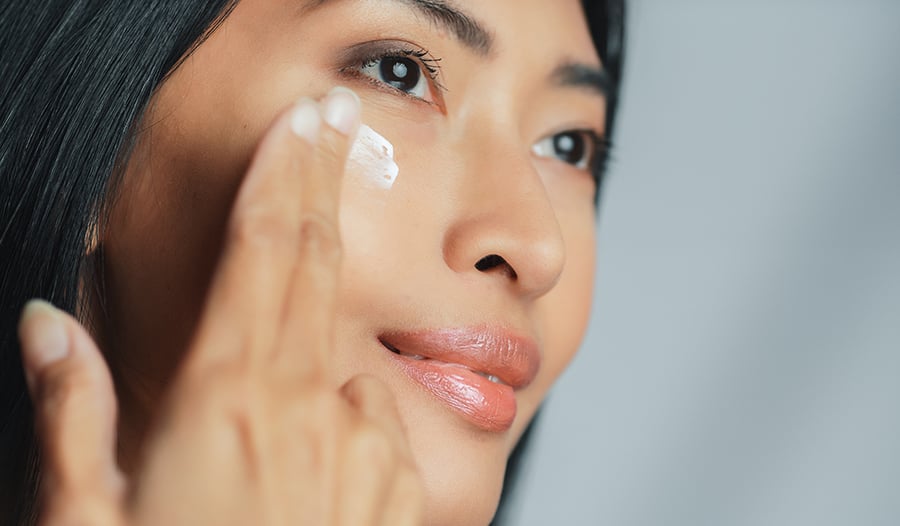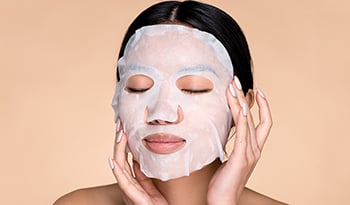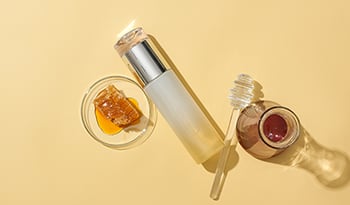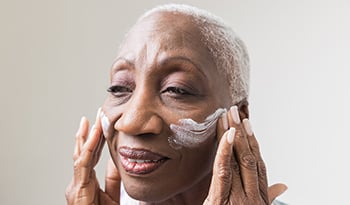Ceramides in Skincare: What Are They?

As a dermatologist who trained for years studying the biology and science behind skin’s structure, I’ve long been familiar with ceramides and the role they play in keeping skin functional. In recent years, ceramides have become increasingly mainstream, with many outside the field of dermatology beginning to recognize their utility in skincare. From beauty gurus and skincare enthusiasts to the average person struggling with dry skin, ceramides have become synonymous with efficient moisturization and, for some, a non-negotiable component of their skincare regimen.
But what exactly are ceramides, what do they do, and why are they so popular? Read on as I break it down and explain how ceramides may help hydrate your skin and decrease signs of aging!
What Are Ceramides?
Our skin is tasked with regulating body temperature, retaining water, and interfacing with the environment to protect us against the elements, among a host of other functions. To make sense of how ceramides fit into all of this, a basic (brief!) review of skin structure is needed.
The skin is divided into three main layers: the epidermis, dermis, and subcutis. The epidermis sits at the top, while the dermis and subcutis represent the deeper layers. The epidermis is made up of 5 layers: the stratum corneum, stratum lucidum, stratum granulosum, stratum spinosum, and stratum basale.
The stratum corneum is the top layer of the epidermis—AKA the first line of defense against external chemicals, infectious agents, allergens, and irritants. A healthy stratum corneum is, therefore, vital to maintaining the skin’s natural function as a barrier. It ensures that harmful substances stay on the outside where they belong while preventing dryness caused by excess water loss through the skin.
Enter ceramides. Ceramides are lipids (AKA fats) that are naturally present in the skin. They play a crucial role in the structure and integrity of the epidermis. Through the complex interplay between various cross-linking proteins, the scaffolding of the skin is formed. You can think of ceramides as being the glue that holds skin cells together to form this strong barrier to the outside world.
When this barrier is compromised, the skin becomes less efficient at carrying out its important functions. This may lead to dryness, irritation, itching, and visible flaking.
What Do Ceramides Do for Your Skin?
Using a product containing ceramides can help seal in moisture and hydration, strengthening that important barrier function for enhanced protection against pollutants, toxins, and infection. Dehydrated skin tends to form more lines and wrinkles—so, keeping skin moisturized is an important part of a well-rounded anti-aging skincare regimen. Ceramides can even restore skin barriers that have been compromised by cold, dry weather conditions or certain inflammatory skin conditions like eczema and psoriasis.
While useful no matter how old you are, ceramide-containing products are especially important as we get older. The skin naturally undergoes a number of changes with advancing age that lead to increased susceptibility to dysfunction of the epidermis. One of these changes is decreased production of ceramides and other important epidermal lipids, with some studies demonstrating that an aged stratum corneum experiences a more than 30% reduction in lipid content.
In short, as we get older, we get drier. With fewer ceramides around to hold onto water, moisture escapes through the skin. This is called transepidermal water loss, and can lead to dry, cracked, dehydrated skin.
Luckily, studies have shown that topical application of ceramide-containing products can supplement natural ceramides and increase hydration levels of the stratum corneum, offsetting some of these consequences and keeping skin looking and feeling healthy and soft.
Types of Ceramides
There are several types of ceramides. The structures of the various ceramides differ, impacting how they function. Chemically speaking, ceramides are made up of a sphingoid base and a fatty acid linked by an amide bond. Different combinations of these molecules create the various ceramides, which have slightly different functions in their role as the glue that holds skin cells together.
The most commonly used ceramides in skincare are listed in the fine print of ingredient labels and include:
- ceramide EOS, also called ceramide 1
- ceramide NP, also called ceramide 3
- ceramide AP, also called ceramide 6
- ceramide NG, also called ceramide 2
- ceramide EOP, also called ceramide 9
If your head is spinning with that alphabet soup, don’t worry—it’s not necessary to get caught up in the nitty gritty. Just know that when different ceramides are combined in the formulation of skincare products, they complement one another to perform more synergistically.
Ways to Incorporate Ceramides Into Your Skincare Routine
While anyone can use ceramides in skincare, including people with acne-prone or sensitive skin, those with dry skin may see the greatest benefit. A ceramide-rich facial moisturizing cream is a great addition to any anti-aging skincare regimen. These can be used as needed—there’s no such thing as too much!
For extra dry skin throughout the body, I recommend applying a moisturizing body cream at least twice daily—with extra applications after handwashing. One great tip for locking in moisture is to apply ceramide moisturizer to damp skin immediately after showering, bathing, or handwashing. This traps existing moisture in your skin when it might otherwise evaporate.
You can also look for ceramides in serums, cleansers, eye creams, sunscreen, and lip products.
Pro tip—reach for products that utilize more than one type of ceramide in addition to other moisturizing ingredients, like hyaluronic acid, squalene, petrolatum, glycerin, and niacinamide. Used together, these ingredients are even more effective at achieving smooth, hydrated skin. (We love a good multitasking product!)
Embracing the Power of Ceramides in Skincare
Ceramides are a natural part of the building blocks of our skin. A deep understanding of how these lipids function—and what happens when they are depleted—has allowed scientists and cosmetic chemists to adapt this knowledge to formulating safe, effective skincare products. Moisturizers containing ceramides may benefit people suffering from chronically dry or sensitive skin and those of us simply looking for ways to optimize our skin health and maintain that elusive youthful glow.
For anyone struggling with an underlying skin disorder, there may come a time when even the thickest, most hydrating ceramide-containing moisturizer isn’t enough to soothe your skin. If that’s ever the case, I recommend consulting a dermatologist to review your symptoms and tailor a treatment regimen to your needs.
References:
- Coderch L, López O, de la Maza A, Parra JL. Ceramides and skin function. Am J Clin Dermatol. 2003;4(2):107-29.
- Meckfessel MH, Brandt S. The structure, function, and importance of ceramides in skin and their use as therapeutic agents in skin-care products. J Am Acad Dermatol. 2014 Jul;71(1):177-84.
- Wang Z, Man MQ, Li T, Elias PM, Mauro TM. Aging-associated alterations in epidermal function and their clinical significance. Aging (Albany NY). 2020 Mar 27;12(6):5551-5565.
ANSVARSFRASKRIVELSE:Velværesenteret har ikke til hensikt å gi diagnoser ...
















































































 Innholdsfortegnelse
Innholdsfortegnelse














